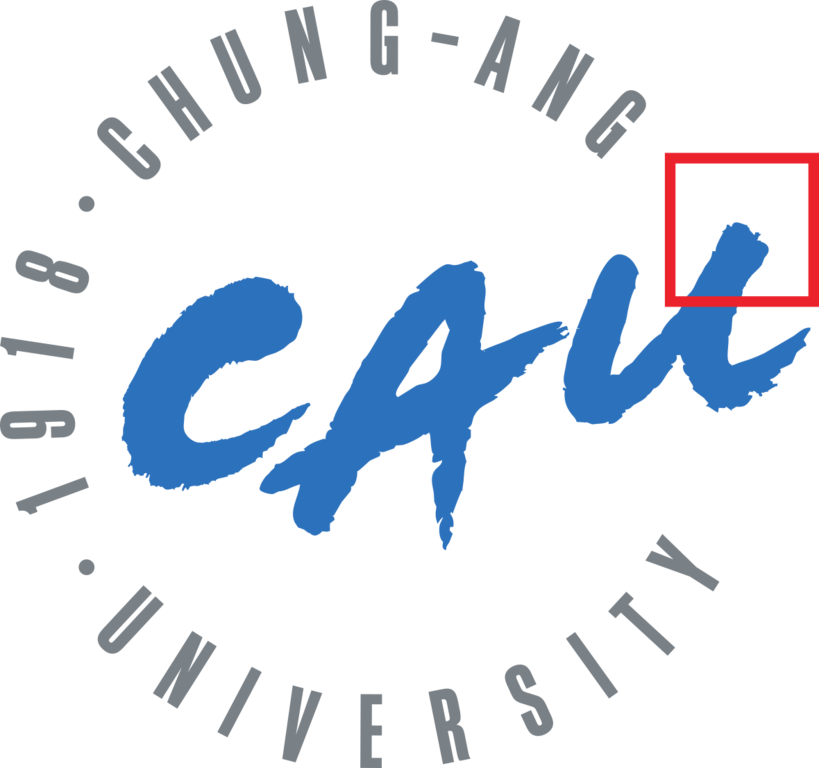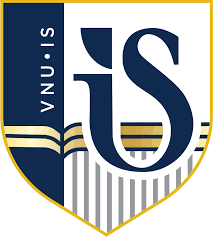Call for Papers of the 2nd International Conference on Human-centered Artificial Intelligence (Computing4Human 2021)
Aims and Scope
The 2nd international conference on human-centered artificial intelligence (Computing4Human) will be held in Danang, Vietnam (and virtual conference), which is organized by the University of Da Nang. Computing4Human begun initially under the name of the international workshop on computational humanities and social sciences in 2020. The rapid development of artificial intelligence (AI) techniques and their applications has remarkably changed how we live and how our societies operate. On the last event, we have focused on these changes in the humanities and social sciences fields. The last event covered embracing domain knowledge of humanities and social sciences fields into AI methodologies, solving research issues in these fields by employing AI techniques, and social and humane issues caused by the novel AI techniques and applications. However, the influence of AI’s advent is not easy to be investigated by only perspectives adopted from the humanities and social sciences. For example, we need city planning experts to discuss further research directions of smart infrastructure or data-driven city planning, and smart healthcare research is difficult to be conducted without comments from medical doctors.
Therefore, this year, we aim at gathering scholars who deal with AI techniques in various domains. We remove boundaries of the area of interest of this conference and extend the area to artificial intelligence methodologies for every user-intimate (human-centered) application and novel issues caused by the advent of AI techniques in every domain. The main purpose of Computing4Human 2021 is to search for unexplored areas of human-centered AI applications and develop advanced methodologies for these areas by encouraging open discussions between scholars in AI and researchers with domain expertise. We founded the following regular tracks to cover the various domains of human-centered AI applications. Although the tracks merely present recently popular issues, we do not restrict topics of potential submissions. We also welcome special track proposals.
Computational Humanities and Social Sciences Track
Track Chairs: Eun-Soon You, Inha University, Korea and Jin-Taek Kim, POSTECH, Korea
With the rapid development of artificial intelligent (AI) techniques and the advent of IoT (Internet-of-Things) era, research subjects of humanities and social science have been becoming computational. For example, various studies have been conducted for computationally analyzing literature works, public opinions for political events, etc. Also, the influence of the spread of AI technology is getting an important research issue on humanities and social science. Due to smart applications surrounding us, the way how our everyday life will change stimulates our interests and imagination. Both two approaches start from respective research areas and attempt to explore opponent areas, maintaining their own perspectives. As preliminary studies, these studies have not had formalized research methodologies or well-established concepts/terminologies. This point makes interdisciplinary studies look fuzzy and ambiguous.
However, at least, it is clear that these studies have been exploring terra incognita. Every attempt that they have conducted (even, insignificant failures) might be valuable for pioneering new research areas. From those trials, studies that originated from computer science can be closer to humanized computing and human-like artificial intelligence. Also, scholars on humanities and social science will obtain understandings and insights for where AI technology is and where it has to go.
This track aims to discuss novel research directions and contributions belonging to intersections between the two research communities. Thereby, we attempt to gather various opinions from different research areas, including computer science, computational linguistics, digital humanities, political science, economic, etc. We collect papers on interdisciplinary studies between computer science and humanities/social sciences, without any limitation.
Smart Infrastructure Track
Track Chairs: Hongsuk Yi, KISTI, Korea and Khac-Hoai Nam Bui, KISTI, Korea
Smart Infrastructures comprise several operators from different domains such as energy, public transport, and public safety. Specifically, cyber-physical systems are developed and operated based on data-driven methods interacting with the physical world.
Recently, the emerging technologies on Internet of Things (IoT), cloud/edge computing and data analytics have provided the capability of exploiting the massive amount of data from the physical world. Therefore, the trend of “IoT meetings AI” has become an emergent research topic for future smart cities and infrastructures.
This track encourages authors, from academia and industry, to submit new research results about technological innovations and novel applications based on AI-powered IoT for smart cities and infrastructure. The scope of this track includes, but is not limited to the following topics:
- Smart sensors for homes, buildings, and infrastructures
- Smart energy metering and power grids
- AI-enabled smart transportation
- Air quality monitoring systems
- Smart building maintenance management systems
Smart Healthcare Track
Track Chair: Hae Gyun Lim, Pukyong National University, Korea
The fast-growing data volume has enabled new artificial intelligence (AI) advances in hardware and software which allowed engineers and scientists to interpret physiological data from sensors. In addition, the internet technologies combining distributed healthcare computing settings have further increased the performance of the system. Particularly, medical devices sector, part of the $3 trillion healthcare industry in the United States, is an area of innovation where researchers and manufacturers are seeking to integrate accuracy with automation especially in the digital health monitoring segment. Those data-driven applications are looking for more efficient methods of optimizations in both executions and outputs sides.
In this smart healthcare track, we would like to explore the potential applications of novel AI technologies (big-data analytics, management of chorionic diseases, medical devices, medical imaging, and integration of AI and internet of things) to enhance the traditional healthcare strategies for supporting the development of the emerging platform and new healthcare medical device for innovating the healthcare ecosystem.
Practical as well as theoretical contributions ranging from the fields of diagnostic imaging interpretation, robot-assisted surgery system, cybersecurity, fraud detection, health monitoring, drug creation technology among others, are invited to this special track.
- Potential issues include, but are not limited to:
- New healthcare devices for the development and commercialization
- Emerging platform in the healthcare industry
- New methods and strategies for healthcare companies
- Technological trends for disruptive innovation in healthcare
- Product healthcare innovation based on new digital technologies Multi- and inter-disciplinary research is very welcome, but all the submitted papers should fall within this smart healthcare scope and should be focused on technology and innovation of healthcare. All submitted papers will be peer-reviewed.
Secure and Green IoT Communications Track
Track Chairs: Tri M. Ngo, Mai T. P. Le, Tuan D. Dao, and Hieu V. Nguyen, ETE, UST-UD, Vietnam
The number of Internet-of-thing (IoT) devices, such as vehicles, unmanned aerial vehicles (UAVs), and sensors, have been increasing rapidly. Therefore, there is a requirement for huge energy consumption for the massive IoT networks. In addition, the beyond fifth generation and sixth generation (B5G/6G) networks will be expected to handle thousands of times of data more than current networks. This leads to a big challenge of security in data transfers.
Many recent emerging technologies have been proposed to reduce the waste of energy as well as to enhance the security for data transmissions such as energy harvesting (EH), simultaneous wireless information and power transfer (SWIPT), cybersecurity, and physical-layer security (PLS). However, the low-complexity methods are still required to adapt to the increasing demands of computational capability. Therefore, this track encourages authors to submit new research results about innovative algorithms for IoT networks. The scope of this track includes, but is not limited to the following topics:
- EH/SWIPT for IoT network
- Non-orthogonal multiple access for massive IoT devices
- Power consumption minimization based on optimization and machine learning
- Resource allocation for secrecy spectral and energy efficiencies maximization
- Wireless communications and security for cyber-physical networks
- PLS in wireless communications
- Secrecy energy efficiency (SEE) performance analysis for communication systems
Explainable Recommendation and Retrieval Track
Track Chairs: Nam D. Vo, University of Danang, Vietnam and O-Joun Lee, POSTECH, Korea
Recommendation and retrieval services are necessary for human beings in modern societies. We collect, consume, analyze, and distribute various types of content (e.g., webpages, multimedia, academic publications, etc.) through the web. And, these services are our navigators while we wander in the fog, which is a flooding amount of web content. The rapid development of artificial intelligence methodologies and the diffusion of Internet-of-Things (IoT) techniques have made the recommendation and retrieval services more sophisticated and accurate. For example, by embracing graph embedding techniques, we can extract and represent characteristics of users, items, or webpages more accurately than mere matrix decomposition methods. Also, knowledge graph embedding techniques have realized semantic search. Combinations of these advances with IoT enable us to obtain accurate and in-depth contextual information.
Despite the improvement in accuracy, methodologies for persuasively providing results of these services to users have not been significantly improved. The existing studies in explainable recommendation and retrieval services utilize only metadata of the web (or metadata represented as knowledge graphs) content and user history. For example, in recommender systems, their explanations have been still limited to “you (or users similar to you) have consumed this kind of items.” These explanations based on data underpinning the results are difficult to make users expect or imagine substances of the web content. Therefore, we need methods for generating explanations that are not fully dependent on mechanisms of the recommendation and retrieval methodologies. To gather the novels approaches and ideas for the explainable recommendation and retrieval systems, this track collects studies for the following topics, but not limited to:
- Natural language generation for explainable recommendation and retrieval
- Visual analytics for explainable recommendation and retrieval
- Knowledge graph generation/inference for explainable recommendation and retrieval
- Explainable recommendation and retrieval based on contextual information
- Evaluation procedures, assessment metrics, and benchmark datasets for explainable recommendation and retrieval
- Extracting and modeling user contexts
- Multi-criteria recommendation and retrieval
- Contextual recommendation and retrieval
- Multimedia content analysis
- User behavior analysis
Business Intelligence Track
Track Chairs: Duc-Quynh Tran and Phuong-Mai Nguyen, International School, Vietnam National University Hanoi,Vietnam
The rapid development of artificial intelligence and data mining has given birth to various business intelligence applications during recent decades. Since business intelligence systems cover all the processes from data acquisition via analysis to interpretation, we need various techniques specialized to diverse business domains, such as data modeling, data representation, preprocessing, knowledge bases, statistical models, and even human-computer interaction. Efficient combinations of these techniques finally support users in understanding market trends agilely, being aware of issues/events in their businesses, managing supply chains, and making strategic decisions. For example, we can extract current user preferences from social media and predict future trends of the preferences by analyzing past preferences’ history. We can also find weak ties in supply chains by employing network analysis techniques.
These systems’ primary purposes have been improving companies’ performances in various aspects, such as marketing, human resource management, and production. Artificial intelligence development can expand the purposes to more qualitative factors: customer satisfaction, company identity, social responsibility, and sustainable growth. This point is critical for modern business environments that focus on future values and ESG (environmental, social, and governance) rather than short-term profits.
Therefore, business intelligence and its applications have attracted the interest of both practitioners and researchers. To gather perspectives of both sides, this track focuses on computing techniques on all business intelligence processes from data acquisition to interpretation. This track will contribute to (i) developing a research community of this field, (ii) discussing the cutting-edge issues and future directions in business intelligence, and (iii) bringing collaboration opportunities among researchers and practitioners.
- Relevant topics include, but are not limited to:
- Business data preprocessing
- Modeling and algorithms for business
- Machine learning and applications for business
- Optimization and intelligent computation for business
- Fuzzy logic and applications for business
- Statistics for Business
Submissions
We invite the following two kinds of papers:
- Research papers (Maximum 7 pages excluding references)
- Position papers and demos (Maximum 5 pages excluding references)
All manuscripts have to be formatted according to the LNCS (Lecture Notes in Computer Science) template. All the manuscripts must be submitted in PDF files through the EasyChair system. Also, authors have to annotate tracks that they aim at on the keyword list in the EasyChair system (not on keywords in manuscripts), e.g., ‘[Smart Healthcare]’ and so on.
Important Dates/Tentative Schedule
- Submission deadline: July 2nd, 2021
- Acceptance Notification: August 15th, 2021
- Final manuscript due: September 17th, 2021
- Conference: October 28th - 29th, 2021





